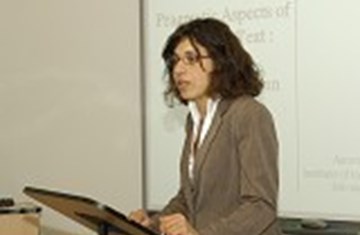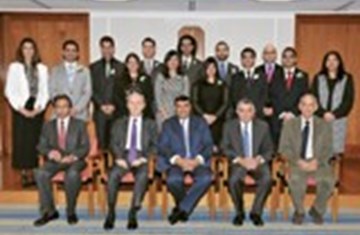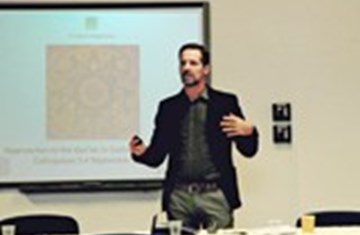IIS Scholar Presents Alternate Reading of the Qiyama in Ismai‘li History
Dr Miklos Sarkozy, Visiting Research Associate in the Institute’s Department of Academic Research and Publications was a chief panellist at The Sixth Biennial Congress of The Association for the Study of the Persianate Societies in Sarajevo from 2-6 September 2013.
The panel comprising three speakers including Dr Sarkozy was on the subject of Messianism and Occultism in Islamic History I: Synthesising Religious and Political Authority. Despite messianism and occultism having proven to be discourses of tremendous social and political potency at elite and popular levels; both being central to various attempts in the history of Islam at synthesising political and religious authority - they are often discounted in historiographies of the period, being treated as either marginal phenomena or as proof of the decadence of later Islamic cultures. The papers presented as part of the panel set out to address these assumptions from a number of angles.
Representing the Institute, Dr Sarkozy opened the panel with the Isma‘ili Imam Hasan II’s (1162-1166 CE) declaration of the Qiyama, the Time of Resurrection, with an emphasis on its political dimensions instead of its better-known religious ones. In a paper entitled Response to Rivalry and Decline: The Political Circumstances of and Reasons for the Announcement of the Qiyama in 1164, Dr Miklos Sarkozy called the Qiyama, ‘the most important spiritual event of Hasan II’s brief reign’ which initiated a new phase in the history of the Nizaris of the Alamut period (1090-1256 CE).
Dr Sarkozy described how after making numerous preparations, in a solemn ceremony at Alamut on 8 August 1164 CE in the presence of various representatives from Nizari strongholds who had been summoned there, Hasan II delivered a khutba and passed on new instructions from the hidden Nizari Imam; according to this decision the Nizari community had now been brought to the Qiyama – Resurrection had set in.
Dr Sarkozy proposed that, on the basis of Caspian chronicles and sources relating to the last decades of the Saljuq period, one could surmise strong political motives behind the announcement of the Qiyama, reflecting significant historical events of the period.
By declaring the Qiyama, Dr Miklos Sarkozy put forth, Hasan II could take advantage of the weakness of the Fatimid Caliphate of Egypt. By 1164 CE, contemporaries had witnessed the destruction of the Eastern Saljuq Empire of Sultan Sanjar, whose realm had been entirely devastated by the ravaging Ughuz tribes. This caused a significant political vacuum yet to be filled a few decades later by the Khwarizmian Empire. Since Sultan Sanjar’s death marked the end of a serious and threatening local power for the state of Alamut, Dr Sarkozy suggested that the declaration of the Qiyama of Hasan II could be perceived as a bold attempt to extend his political influence by reinforcing his position both in the Caspian area and in Quhistan ruled nominally by the Saljuqs.
Other motives discussed were the annulment of rivalries and hostilities, both inside and outside the Isma‘ili community of Northern Iran. “It is well-known,” said Dr Sarkozy, “that the rule of Hasan II between 1162 CE and 1166 CE was not without problems and there was significant local opposition to him. Hasan II may have intended to strengthen his own stance against his opponents within the community.”
Another possible motive for the declaration of the Qiyama by Hasan II may have been his non-Nizari rivals in the Caspian provinces. The most formidable and effective local anti-Isma'ili power was the Bawandid Kingdom, which fiercely and routinely attacked Isma‘ili strongholds in Northern Iran in these decades with relative success. Bawandid power reached its zenith under Shah Ghazi Rustam, who ruled between 1141-1165 CE and the end of his reign nearly coincided with the announcement of the Qiyama.
The other panellists presented on the emergence of messianism as an acute political problem in Timurid Iran and a case study of certain treatises on astrological-letter magic written for an Indian royal audience, arguing for the centrality of occultist discourses to political practice in 15th-century Iran and India.
Dr Sarkozy is with the IIS till the end of 2013. His focus is on the history of the regional policy of the Nizari Ismaili state with its neighbouring kingdoms of Northern Iran in the Caspian provinces of Gilan and Tabaristan (Mazandaran) between the 11-13th centuries. Dr Sarkozy has published articles in Hungarian, English and Persian, which include his studies about the Medieval history of Northern Iran and Iranian-Hungarian relations. In 2012, he became a contributor to Encyclopaedia Iranica.






